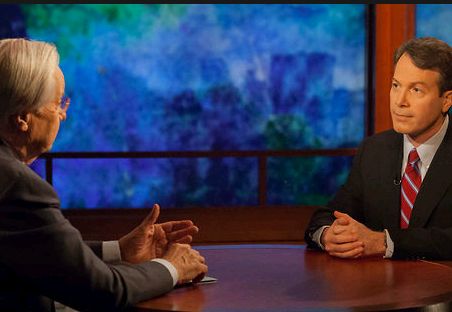If you haven’t yet watched Bill Moyers’ interview with research scientist and climate change communication expert Anthony Leiserowitz, I recommend doing it ASAP. (Stream it on the Bill Moyers & Company website).
Meanwhile, here are some top takeaways for climate messengers.
As you may know, Leiserowitz is director of the Yale Project on Climate Change Communication which has teamed up with researchers at the George Mason University Center for Climate Change Communication to conduct ongoing tracking polls about global warming.
They’ve identified “Six Americas”—six groups or “publics” defined by their distinct beliefs, attitudes, risk perceptions, motivations, values, policy preferences, behaviors and barriers to action on climate change—and have zeroed in on particular engagement strategies that work best for each of these audiences.
Here’s a quick Six Americas refresher:
- The Alarmed—16 percent of Americans—are eager to get on with solutions but don’t know yet what those solutions are. Only about a quarter of these Americans have been active on climate issues in the past year. Our messages about global warming should help them identify and focus their energy on the most effective actions, behaviors, and policy solutions. Remind the Alarmed that they are not alone.
- The Concerned—29 percent—know climate change is happening, human caused and serious, but they don’t necessarily see the urgency. They tend to think of it as a far-off problem, not something that will impact their community, their family or friends, or the places they love. The Concerned need to be reminded that this is happening now and that it’s local and personal—not about polar bears and “future generations” but about ourselves and our kids.
- The Cautious—25 percent—are still on the fence about global warming. They’re trying to make up their mind about whether it’s happening and, if so, whether it’s natural or human-caused. They need messages that reinforce, in clear, compelling, emotional terms, the basics of climate science and solutions.
- The Disengaged—8 percent—have heard of global warming but don’t know much about the causes, consequences, or solutions. Messages to the Disengaged should reinforce the basics and lay out the moral dimensions of climate impacts—namely that America’s least well-off families are most at risk to be harmed by climate impacts in their communities.
- The Doubtful—13 percent—don’t think it’s happening, or if they do, they think it’s natural. They don’t think there’s anything we can do about it. They’re not paying much attention. They need the basics reinforced, especially by messengers they trust (not necessarily scientists or elected officials.)
- The Dismissive—8 percent—are firmly convinced climate change is not happening, or it’s not human caused, and not serious. Many say it’s a hoax or a plot. They represent a small but mighty share of the public that’s mobilized, organized, and highly vocal about their beliefs. Our messages are not likely to move them, but it’s not worth pissing them off either. Call out the disinformation campaigns spreading doubt about climate science, but don’t launch personal attacks on the Dismissive.
Leiserowitz reminds us that whomever you’re talking to, it’s important first to listen, to try and figure out where they’re coming from. If possible, your messages should reflect their values and motivations and find some common ground.
But one point Leiserowitz makes in his conversation with Bill Moyers is that each of these Six Americas needs to hear clear, simple messages that reinforce the basics about climate change and make it personal. These should be repeated often, by respected and trusted messengers. And climate messages should offer hopefulness and confidence in readily available solutions.
Here’s where to start:
[flashcard]
Climate Essentials for Six Americas
1. Climate change is happening now, it’s human-caused, and it’s serious. Scientists are convinced by overwhelming evidence. We’re seeing serious climate change impacts now due to human activity, and it’s getting worse.
2. It’s personal, not partisan. “It’s not just future generations,” Leiserowitz says, “It’s us and our own children. I have a nine-year-old son—he’s going to be my age in 2050. I don’t want him to live in the world that we’re currently hurtling towards.”
3. There’s hope. There are solutions already on the table that are being implemented in communities all across this country and around the world. When this country puts our minds to something, we can do it.
[/flashcard]


Comments are closed.